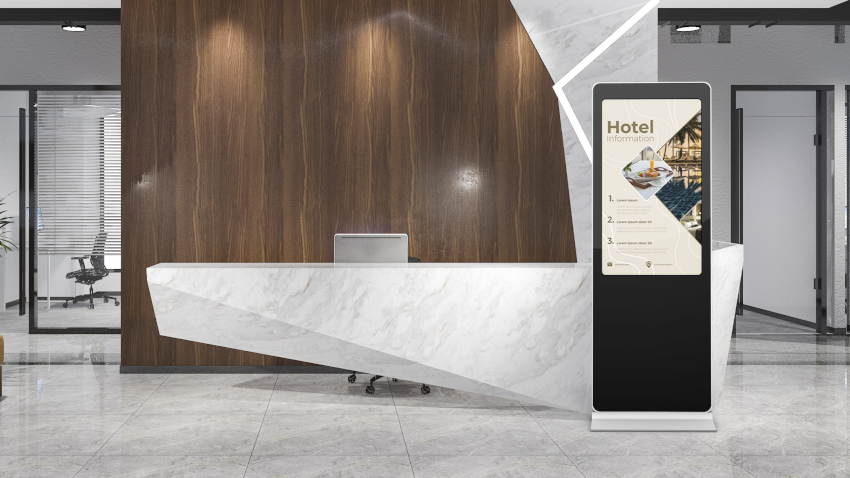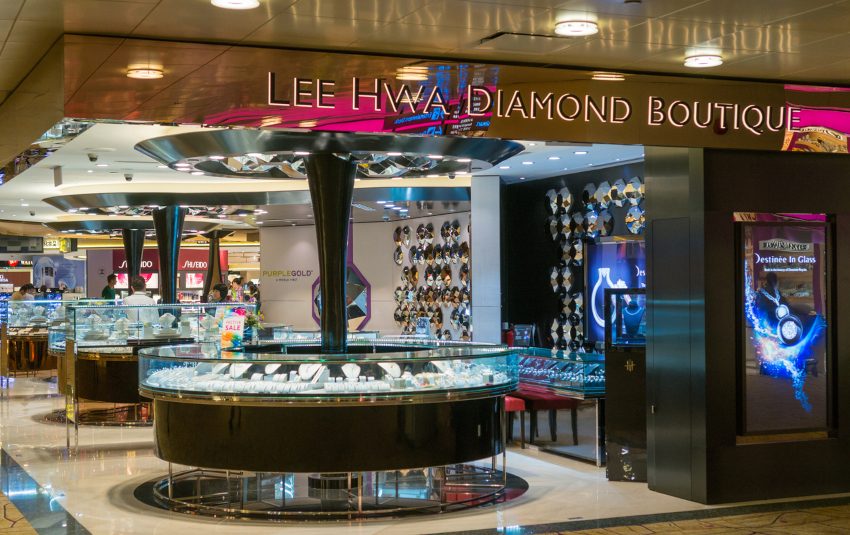7 Reasons Why Your Business Needs Digital Signage
The global digital signage industry is projected to reach 27.8 billion by 2026. Therefore, brands need to integrate this technology with their marketing strategies.

Traditionally, businesses used print advertisements to show marketing messages. However, you require more sophisticated mediums to stand out in the digital era. Firstly, the high-resolution displays on digital screens are more attractive than posters. What’s more, digital screens support a range of formats. In addition to images, you can broadcast videos, web pages, graphics, and presentations. The benefits of digital signage include:
1. Promote Self-Service
The popularity of self-service tools among consumers is increasing. In fact, 67% of consumers favor self-service over interacting with a company representative. Moreover, the self-service market will reach 68.01 billion by 2026. Thus, it is essential to equip your retail store with digital kiosks to meet changing customer behavior.
Digital kiosks provide product information and directions to manage traffic in retail stores. For example, you can use indoor mapping to customize shopping routes. As a result, visitors won’t waste time waiting for salespeople. Moreover, customers will spend less time navigating through your facility.
One of the outstanding reasons why digital signage is important is it saves on staff time. Think about all the time your salespeople spend following shoppers around. Digital signage systems display essential information and let employees work on other projects. For instance, campus kiosks can have data on financial aid, accommodation, and career services. Thus, students can get the information they need on their own.
2. Reduce Paper Use
Digital signage will help you go paperless. Recent statistics estimate that 82% of U.S. companies rely heavily on paper. Besides, 45% of the paper generated in offices is thrown out at the end of the day.
Advertising on digital displays instead of print media reduces paper usage. For example, restaurants can replace dull menus with digital menu boards. It is quicker and more cost-effective to update a digital sign than printing new menus often. Furthermore, digital signage solutions are excellent in attracting a customer’s attention.
3. Improve Corporate Communication
Effective communication drives employee engagement and boosts productivity. In contrast, poor communication demotivates staff and results in low retention rates. To put the effects of ineffective communication into perspective, 86% of employees say it causes company failures. Thus, it is vital to make your employees feel valued and heard.
To start, you can display announcements and instructions on a digital screen. Next, include sales figures and goals for the month and key company metrics. For instance, retailers can post sales targets to motivate salespeople or manufacturing business can display production metrics and KPIs. Additionally, you can broadcast production metrics or new clients.
Posting an employee’s achievements on a digital signage display makes them feel valued. Use fun pictures or stunning videos to celebrate personal accomplishments. For example, you can use video walls to highlight an employee who completed an advanced degree or landed a valuable client.
Organizations with connected employees show productivity increases of 20-25%. Fortunately, digital noticeboards will update your team on real-time company news. In addition, you can share company culture and promote company objectives.

4. Enhance Customer Experience
Today’s ad world is crowded. Going visual is one of the effective ways to stand out. In addition to exciting customers, digital content is incredibly memorable.
One of the prime reasons why digital signage is important is that you can tailor it to customer demands. Gartner projects that 89% of companies will primarily compete on customer experience. Therefore, brands need to adapt experience-led strategies. For instance, a train station or airport can use wayfinding signs to simplify the passenger journey. Similarly, healthcare institutions can deploy a digital directory to help patients find rooms and doctors.
Reducing wait time is one way to enrich customer experiences. Long queues frustrate customers and reduce the chances of returning to your store. In fact, consumers are only waiting to wait for 14 minutes to get service. For shoppers, the perceived wait time tends to be longer than the actual time. Fortunately, digital signs are excellent in distracting customers. Consumers can watch news and videos to pass the time. Additionally, visitors can play interactive games on touchscreen monitors.
Digital signage also lets consumers focus on relevant products. 75% of customers are more likely to purchase from a business that knows their name and purchase history. Fortunately, digital signage will help you retain customers by showing personalized content.
5. Analytics
Data analytics helps brands determine how well they are doing. Additionally, data shape marketing strategies. Already, 59% of companies are using analytics in some capacity. Digital signage analytics offers information about the audiences interacting with signs. You get insight into customer characteristics, interests, and buying behavior. For instance, shopping malls can identify the most popular stores and the age group of most visitors. Similarly, a retail store can compare the number of buyers and visitors.
Digital signage analytics provide feedback on marketing campaigns. You can tell which promotions work and those that you should refresh. What’s more, you will identify the content that attracts the most visitors. Lastly, the analytics will inform your content creation efforts.
6. Easy to Update
Making quick updates is among the reasons why digital signage is important. In comparison, you have to design and print static signs to reflect changes. Moreover, you can access the content management system (cms) remotely via an internet browser or mobile app. As a result, the content on every media player will be relevant and updated.
Digital signage software also enables scheduling. For example, you can run special sales on your digital signs every first day of the month in your retail store. Similarly, digital menu boards will show different options for morning, afternoon, and evening. What’s more, you can update electronic signage as many times as you like.
7. Social Media Integration

Social media is here to stay, considering that it boasts around 3.78 billion users. Marketing your social media well can help you gain on your competitors and enjoy rapid growth. Also, social media makes excellent digital signage content. For example, a fashion store can post snapshots of current trends and match them with their inventory. Additionally, you can encourage customers to share photos as they model your clothes. As demonstrated, digital signage can deliver immersive customer experiences.
However, you should first identify the platform with most of your consumers. Are they active on Twitter or Facebook? Next, incorporate live video to let people experience your brand. A strong online brand will build your customer loyalty in the long run. Furthermore, you get unlimited content for your digital signs. But, you should make it easy for shoppers to engage with you online. You can offer Wi-Fi to encourage visitors to share photos from their mobile devices. Lastly, have fun with your promotions by including memes, animations, and funny videos.
In Conclusion
Digital signage has many benefits for healthcare, education, hospitality, retail, manufacturing, and other markets. To start, the technology is easy to update. After installation, you can expect improved internal communication, enhanced customer experience, and reduced paper use. Moreover, digital signage analytics will help you understand customer behavior better.



